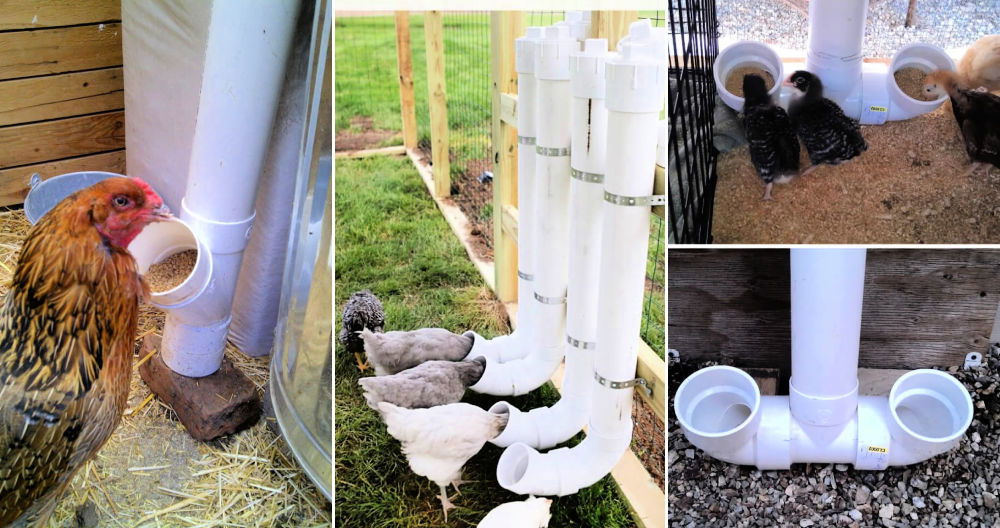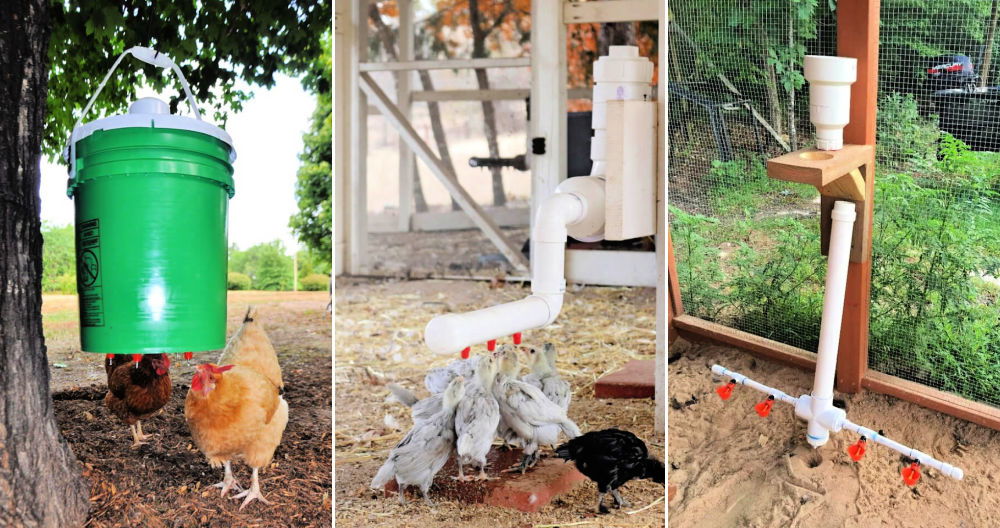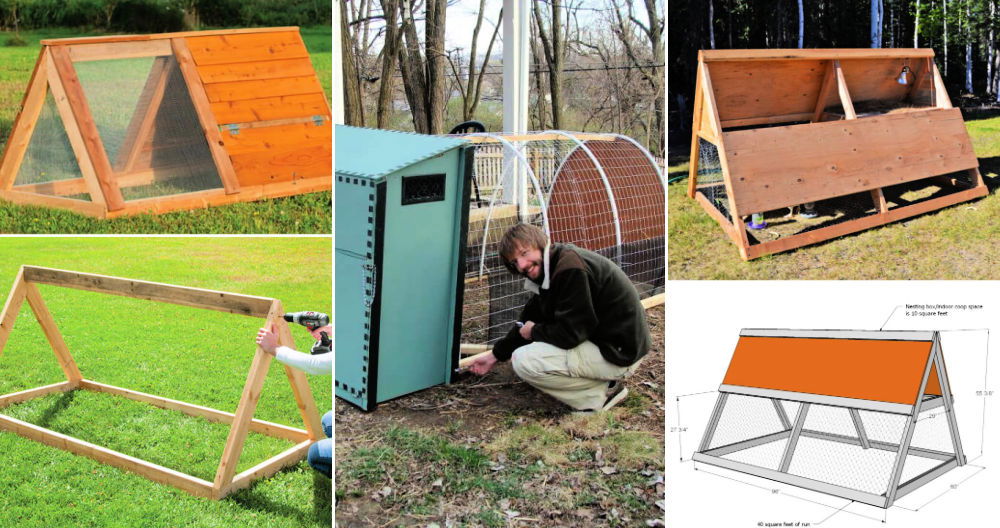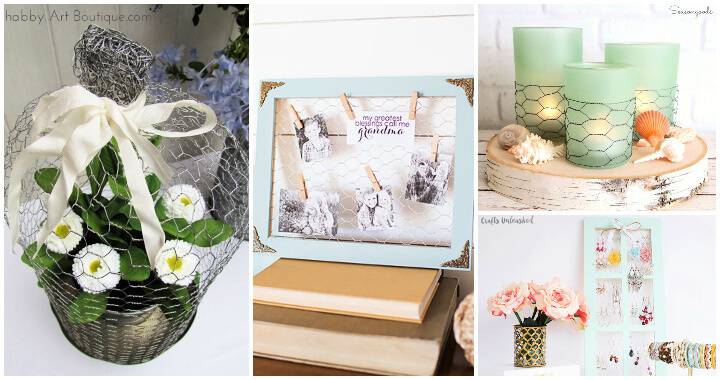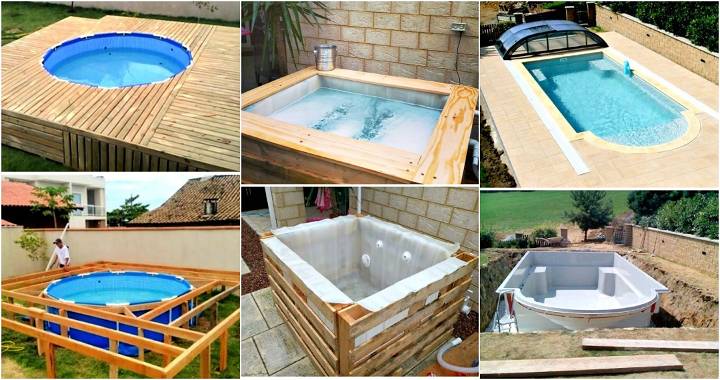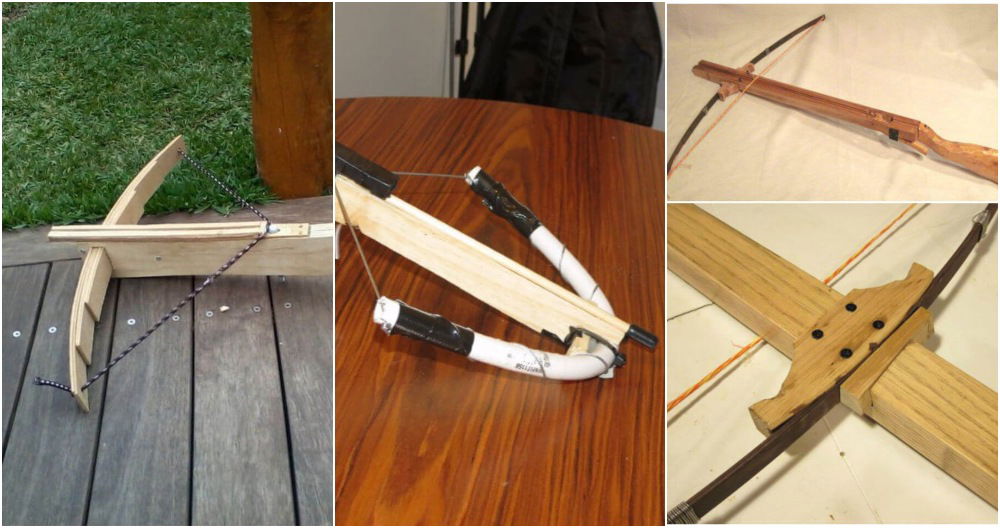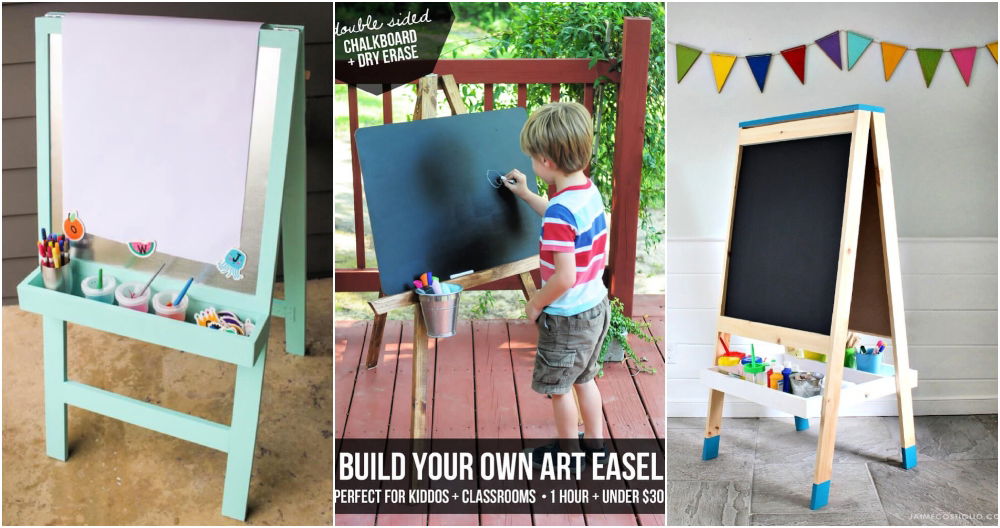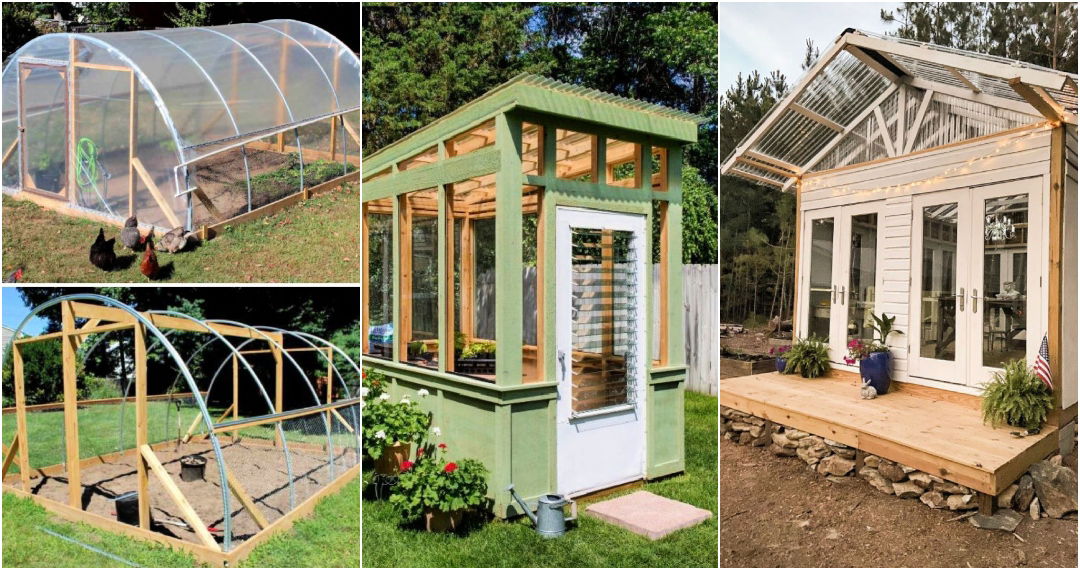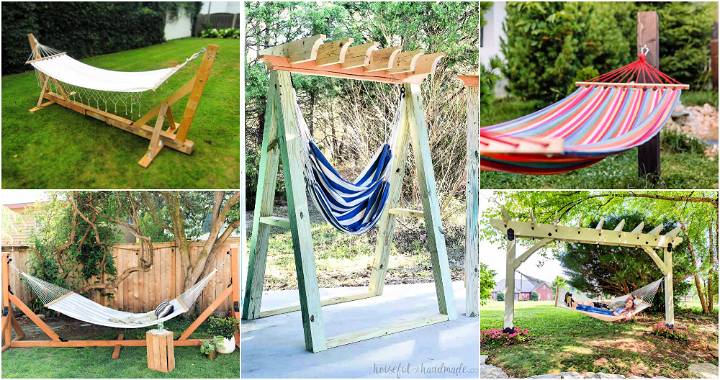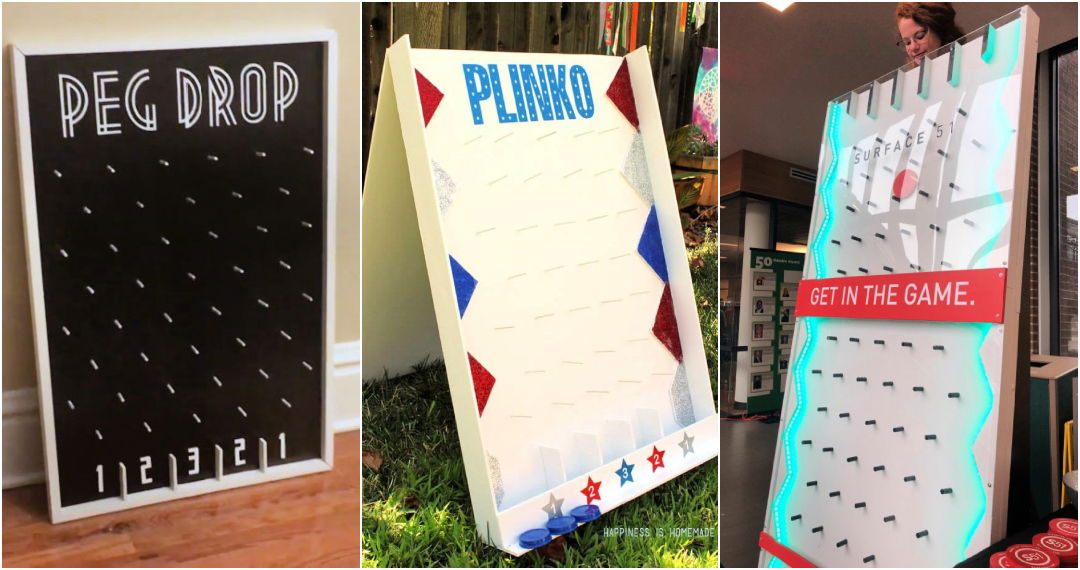Are you intrigued by the idea of crafting your own DIY chicken run but unsure where to start? This guide will take you through 25 homemade DIY chicken run plans, offering step-by-step instructions that cater to your specific needs. From selecting the ideal location to gathering all the necessary materials, we cover every aspect of the process. Our focus is to provide clear, engaging, and instructive content that simplifies your project, making it accessible no matter your level of diy skills.
Building a chicken run doesn't just ensure your feathered friends have the freedom to roam; it also plays a crucial role in their safety and well-being. By following our simple and secure DIY chicken run instructions, you'll build a protective haven for your chickens that also blends beautifully with your outdoor space.
Let's guide you through choosing the right location, constructing a durable frame, and adding those all-important finishing touches that make all the difference. Get ready to enhance your backyard with a practical, yet charming DIY chicken run that your poultry pals will love.
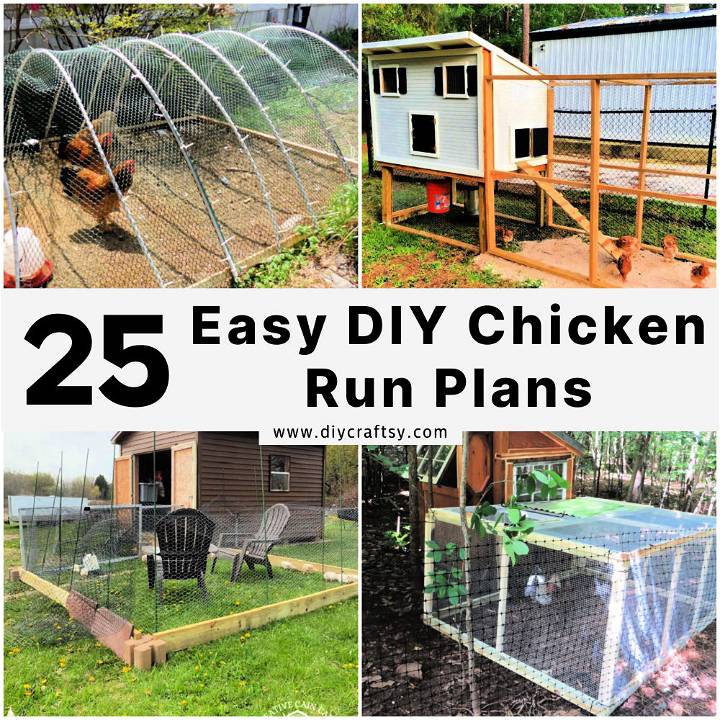
Why Build a DIY Chicken Run?
Building a DIY chicken run offers numerous benefits, not only for your chickens but for you as well. Let's dive into the reasons why it's a great project to undertake:
- Safety: First and foremost, a chicken run provides a secure space that protects your chickens from predators and potential hazards. By using strong materials and proper construction techniques, you can ensure their safety, which is paramount for their wellbeing.
- Health and Happiness: Chickens need space to roam, forage, and exhibit natural behaviors. A spacious run allows them to enjoy the outdoors safely, leading to happier, healthier birds. This can result in better egg production and overall health.
- Pest Control: Chickens are natural foragers and will eat various pests, including ticks, beetles, and other insects. Having a run gives them the opportunity to help keep your garden and yard pest-free in a natural way.
- Fertilization: As chickens scratch and peck at the ground, they also help fertilize it with their droppings. This can improve the soil quality of your garden or yard over time.
- Enjoyment and Education: Building a chicken run is a rewarding DIY project that offers the satisfaction of making something valuable. It's also an excellent educational experience for children, teaching them about animal care, responsibility, and the basics of construction.
By constructing a DIY chicken run, you’re not just building a structure; you’re enhancing the quality of life for your chickens, benefiting your garden, and embarking on an enjoyable learning experience.
Planning Your DIY Chicken Run: A Step-by-Step Guide
Building a DIY chicken run is a rewarding project that enriches your chickens' lives and enhances your backyard. Here's a straightforward guide to help you through the planning process.
How Many Chickens? (Space Requirements)
- Minimum: Aim for 10 square feet per chicken to ensure they have enough space to roam, forage, and express natural behaviors.
- Ideal: For happier, healthier chickens, provide 15-20 square feet per bird. This extra space can significantly reduce stress and behavioral problems.
- Local Laws: Always check local regulations to ensure your chicken run complies with size and bird number restrictions.
Where Should I Put It? (Location Considerations)
- Sunlight: Find a balance of sun and shade. Morning sunlight with afternoon shade is perfect, or arrange for artificial shade structures.
- Drainage: Opt for higher ground with a slight slope to prevent water accumulation and ensure a dry, comfortable environment for your chickens.
- Proximity to Coop: Direct access from the coop to the run is ideal. If not possible, secure the path between them to protect against predators.
- Protection: Visibility from your house can deter predators. Also, consider natural or artificial overhead protection against birds of prey.
What's Your Budget? (Material Costs)
- Lumber: Wood prices vary, so get updated quotes. You'll need posts, frames, and potentially decorative elements.
- Wire Mesh: Though costlier, hardware cloth offers better protection than chicken wire. Calculate the square footage you'll need for coverage.
- Roofing: Options include corrugated metal, clear panels, or tarps. Prices vary, so choose based on your budget and aesthetic preference.
- Extras: Remember the smaller items like latches, hinges, screws, and treatments for weatherproofing.
Is This the Right DIY for You? (Skill Assessment)
- Basic Project: If you're adept at measuring, cutting, and basic construction techniques, constructing a chicken run is well within your reach.
- More Involved: Projects that require advanced skills, like predator-proofing or constructing roof trusses, may require additional expertise or help.
To build a chicken run, plan carefully, measure twice, cut once, and ask for help if needed. Prioritize safety and enjoyment for your chickens.
Predator-Proofing Essentials for Your DIY Chicken Run
Ensuring your chicken run is secure against predators is crucial for the safety and well-being of your flock. Here, we'll cover essential strategies for creating a predator-proof chicken run, focusing on secure bases, solid walls, roof security, and reliable latches.
Secure Base
Burying Wire Mesh: One effective method to deter digging predators is to bury hardware cloth or wire mesh around the perimeter of the chicken run. Extending at least 12 inches below ground, this barrier prevents animals like foxes and dogs from digging their way in.
Concrete Footings: For an even more secure base, consider installing concrete footings around the perimeter. This involves pouring concrete along the edges of your chicken run, embedding your fence deeply into the ground, which is an almost impenetrable barrier for predators.
Apron Design: An alternative to burying mesh is to install an apron—a wire mesh that extends from the bottom of the run outward, lying on top of the ground. This should extend at least 12 inches from the run. Predators attempting to dig near the fence will encounter this unexpected barrier, preventing them from reaching your chickens.
Solid Walls
The walls of your chicken run need to be sturdy and made of materials that predators cannot easily rip apart or squeeze through. Hardware cloth is recommended over chicken wire. Chicken wire can keep chickens in but isn't strong enough to keep determined predators out. Cover at least the bottom three feet of your run's walls with hardware cloth, securing it tightly to the frame of your run.
Roof Security
The roof of your chicken run plays a critical role in keeping your birds safe from aerial and climbing predators. Solid roofing materials like metal roofing sheets or polycarbonate panels offer great protection against the elements and predators. Ensure that the roof is securely attached to the run, using screws and washers for a tight fit that won't be easily dislodged by wind or animals trying to break in.
Latches
The gate to your chicken run is a potential weak point that predators may exploit. Use sturdy, predator-resistant latches that cannot be easily opened by raccoons, foxes, or other clever animals. Spring-loaded latches, padlocks, or carabiner clips are good choices, providing an extra layer of security to keep your flock safe.
By incorporating these predator-proofing essentials into your DIY chicken run, you'll create a safer environment for your chickens, protecting them from common predators and giving you peace of mind.
How to Make a Chicken Run
Making a safe and spacious chicken run is essential for the well-being of your chickens. Not only does it give them more room to move, but it also protects them from predators. Follow this step-by-step guide to build a cost-effective and secure chicken run.
Step 1: Planning and Preparation
Start by measuring the area where you plan to build the chicken run, ensuring it aligns with your property lines and is square with your chicken coop. Avoid using existing fences as guides if they are misaligned. Mark all corners with stakes and visualize the area by running a string around it.
Step 2: Digging Post Holes
Using a post digger, dig holes about 2 to 2.5 feet deep where your posts will be placed. The width should match that of the post or digger. There's no need for concrete; backfilling with dirt will suffice.
Step 3: Choosing and Setting Posts
To save money without compromising on sturdiness, opt for landscape timbers instead of traditional 4x4s or round posts. Landscape timbers are cost-effective, pressure-treated, and durable. After digging each hole, place your post and start backfilling with dirt, ensuring the post is plumb using a level.
Step 4: Wrapping the Enclosure with Fencing
Use fencing material to fully enclose the area, making sure it’s tight and secure to protect chickens from predators. For added security against smaller predators, add a layer of hardware cloth or chicken wire around the bottom two feet of the fencing.
Step 5: Strengthening the Fencing
Add boards along the top and bottom of your fencing for extra stability. Deck boards are a good choice as they are less bulky and slightly cheaper than 2x4s. Splitting these boards can save even more money.
Step 6: Covering the Top
To protect against climbing predators and birds of prey, cover the top of the chicken run with chicken wire. Depending on the size of the enclosure, you might need a supporting beam across the middle to prevent sagging.
Step 7: Making the Chicken Entry
Make a doorway for the chickens to move between their coop and the run. Ensure the entry is easily accessible for the chickens and secure to keep predators out.
Step 8: Maintaining the Ground
Regularly check the chicken run for holes or areas where chickens have dug up the ground. Level these areas as needed to prevent escapes.
Step 9: Adding Perimeter Security
Surround the outside of the chicken run with rocks or gravel. This deters digging predators and adds an extra layer of security.
Video Tutorial
For a step-by-step video tutorial on building a DIY chicken run, watch SimonSaysDIY's guide.
This visual guide complements the written instructions well, showing each technique clearly and simplifying complex steps for easier understanding.
Enrichment for Happy Chickens
Creating an engaging and comfortable environment for your chickens is crucial for their health and happiness. Enrichment in their run can stimulate their natural behaviors and prevent boredom. Let's explore some key aspects of chicken enrichment.
Dust Baths
Why They're Important: Chickens naturally take dust baths to maintain their feather health and ward off parasites. It's an essential behavior that keeps them clean and comfortable.
How to Create Them: Setting up a dust bath is simple. You can use a shallow box or corner of the chicken run and fill it with a mix of sand, wood ash, and diatomaceous earth. Ensure the bath is easily accessible and large enough for multiple chickens to use at once.
Variety of Perches
Natural Behaviors: Perches are vital for chickens to roost and feel secure. They mimic the safety of tree branches, allowing chickens to sleep off the ground away from potential predators.
Different Heights and Materials: Incorporate perches of varying heights and materials in your chicken run. Use branches from trees, bamboo sticks, and even upcycled materials like ladders. The diversity encourages more natural movement and roosting behavior.
Safe Treats
Healthy Options: Chickens love treats, and offering them safe and healthy options can significantly enrich their lives. Options include leafy greens, vegetables like cucumbers and pumpkins, and fruits such as berries and apples. Always ensure treats are fresh and pesticide-free.
Foraging Areas: Designate areas within the run where chickens can safely forage. You can scatter treats around these areas or grow chicken-friendly plants and herbs for them to peck at. This stimulates their natural foraging instincts.
Boredom Busters
Keeping chickens entertained is crucial for their well-being. Bored chickens can develop harmful behaviors like feather pecking or aggression. Here are some ideas:
- Hanging Vegetables: Hang cabbages or other leafy greens from a string. Chickens will jump and peck at them, providing both a physical workout and a snack.
- Hiding Treats: Hide treats in various places around the run. Use hollowed-out logs, under perches, or inside specially designed treat balls. This encourages exploration and problem-solving.
Implementing these enrichment strategies will lead to happier, healthier chickens. They're easy to set up and can make a significant difference in the quality of life for your feathered friends. Remember, a happy chicken is a productive chicken, likely to provide you with more eggs and fewer problems.
Maintenance Tips for Longevity
Maintaining your chicken run not only keeps your chickens happy and healthy but also extends the life of the run itself. Follow these tips to ensure your chicken run remains in top condition year after year.
Weatherproofing
- Wood: Regularly check and treat the wood used in your chicken run. Use a non-toxic sealant to protect it from moisture and prevent rot. Reapply the sealant as recommended, usually once every year or two, depending on your climate.
- Wire: Inspect the wire mesh for any signs of rust or damage. If you find rust, you can clean it off with a wire brush and apply a rust-inhibiting paint to prevent further corrosion.
- Roofing Materials: Ensure the roofing is intact and secure. Replace any damaged or missing parts immediately to keep the run dry. Applying a waterproof coating can add an extra layer of protection against the elements.
Deep Cleaning
Conduct a deep clean of the chicken run at least twice a year. Remove all bedding and waste, and scrub the surfaces with a mild, chicken-safe disinfectant. Rinse thoroughly and let dry before adding fresh bedding. This process helps prevent disease and keeps the run smelling fresh.
Ground Cover
Choosing the right ground cover is essential for cleanliness and chicken health.
- Sand: Easy to clean and provides natural grit for chickens. Rake regularly to remove waste and keep the surface level.
- Wood Chips: Excellent for odor control and moisture absorption. Replace every few months to maintain cleanliness.
- Grass: Provides natural foraging material but requires more maintenance. Rotate your chicken run area if possible to prevent the ground from becoming bare and muddy.
Pest Prevention
Pests such as insects and rodents can pose a threat to your chickens' health and the structural integrity of the run.
- Insects: Planting herbs like lavender, mint, and rosemary around the run can act as natural insect repellents. Additionally, diatomaceous earth can be sprinkled around the perimeter to deter crawling insects.
- Rodents: Ensure the run is properly sealed, with no gaps larger than ¼ inch. Storing feed in secure, rodent-proof containers also helps prevent attracting unwanted guests.
Regular maintenance and attention to these areas will keep your chicken run functional and safe for your feathered friends for years to come.
Creative Upcycling & Alternative Materials
Creating a chicken run doesn't have to be an expensive endeavor. With a little creativity and a keen eye for repurposing, you can build a functional and unique space for your feathered friends. Let's explore how to use alternative materials to craft a chicken run that stands out, is budget-friendly, and provides a safe and enriching environment for your chickens.
Repurposed Pallets
Design Ideas for Using Pallets as Walls or Framing
Pallets are a goldmine for DIY projects, including your chicken run. They are often free or very cheap, making them an excellent choice for a budget-conscious builder. Here's how to use them:
- Walls: Dismantle pallets and use the planks to create solid walls. This provides wind protection and adds a rustic charm.
- Framing: Use whole pallets as the frame for your chicken run. They can be easily connected to form a sturdy structure. Just ensure they are securely fastened together to prevent any gaps.
Fencing Alternatives
Exploring Options Beyond Standard Chicken Wire
While chicken wire is the go-to for many, there are alternatives that can add character and even enhanced security:
- Hardware Cloth: It's a bit more expensive but offers better protection against predators due to its smaller openings.
- Vinyl Fencing: For a more durable and maintenance-free option, consider vinyl fencing. It can be more costly upfront but saves time and money in the long run.
- Upcycled Doors or Windows: These can create sections of the run, offering both charm and functionality. They provide ventilation and a way to access the run easily.
Found Objects
Ideas for Turning Salvaged Materials into Enrichment Features
- Old Tires: Can be used as planters for chicken-friendly plants or filled with sand for a dust bath area.
- Broken Terracotta Pots: Partially bury them in the ground to create interesting nooks for chickens to explore.
- Discarded Ladders or Branches: Position them at various angles to create perches and climbing areas.
Budget-Friendly Tips
How to Source Materials Affordably
- Local Online Marketplaces: Websites and apps dedicated to selling or giving away used items are treasure troves for materials.
- Construction Sites: With permission, you can often find offcuts and unused materials.
- Community Boards: Keep an eye on community boards for giveaways or sales of useful materials.
- Pallet Yards: Many pallet yards give away old or broken pallets for free or a minimal charge.
By using repurposed materials, you're not only saving money but also adding character and contributing to a more sustainable world.
FAQs on Building a DIY Chicken Run
When it comes to enhancing the quality of life for your chickens while adding value to your backyard, building a DIY chicken run is a popular project many enthusiasts consider. To help you get started or troubleshoot any issues you might encounter, here are answers to some of the most commonly asked questions about constructing a chicken run.
What materials do I need to build a chicken run?
- Pressure-treated lumber for the frame
- Hardware cloth or chicken wire for the sides
- Metal roofing or a strong, waterproof material for the top
- Hinges and latches for any doors
- Tools including a hammer, saw, drill, wire cutters, and staple gun
How big should my chicken run be?
A general guideline is to provide at least 10 square feet of outdoor space per chicken. However, more space is always better if you have the room.
How do I protect my chicken run from predators?
- Use hardware cloth instead of chicken wire for better protection.
- Bury the bottom edge of your run's walls at least 12 inches deep to prevent digging predators.
- Ensure the top of the run is covered with strong wire or roofing material to protect against aerial threats.
- Install secure latches on any doors or access points.
Can I build a chicken run on uneven ground?
Yes, you can build on uneven ground, but you may need to level the area first or adjust the lengths of your vertical supports to ensure the run is stable and secure.
What kind of maintenance does a chicken run require?
- Regular checks for holes or damage that could let predators in.
- Cleaning out any old bedding or food waste to keep the run hygienic.
- Checking that doors and latches remain secure and functional.
How do I keep my chicken run from getting muddy?
- Ensure good drainage by choosing a slightly elevated area or adding gravel or sand to the bottom of the run.
- Cover the ground with straw, wood chips, or sand to help absorb moisture and provide easy-to-clean bedding.
Can I move my chicken run?
If you anticipate needing to move your run, consider building a smaller, portable run or adding wheels to one side for easier mobility. Keep in mind, larger structures might not be as easily movable.
How can I make my chicken run more enjoyable for my chickens?
- Add perches at various heights for them to roost on.
- Include dust baths and areas for them to scratch and peck.
- Plant chicken-safe plants around the outside for them to peck through the wire.
Building a DIY chicken run can be a fulfilling project that significantly improves the quality of life for your chickens while contributing positively to your yard's ecosystem. With the right planning and care, you can build a safe, enjoyable, and functional space for your feathered friends.
25 Homemade DIY Chicken Run Plans (How to Make)
Discover 25 DIY chicken run plans to build your own backyard enclosure. Get step-by-step instructions for making a safe and spacious coop for your flock!
1. Modern DIY Chicken Coop and Run
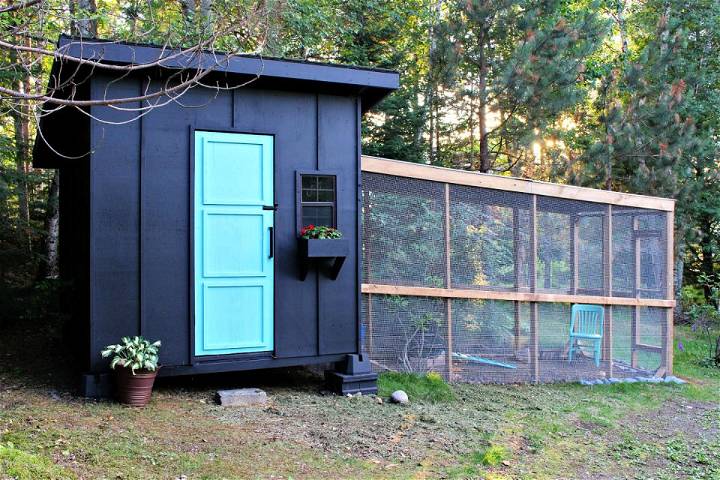
Building a modern DIY chicken coop on a hillside can be a unique challenge, but Dans le Lakehouse has crafted a thorough guide to help you through the process. Tanya shares her experience, providing a step-by-step tutorial that covers everything from laying a sturdy foundation to installing a practical automatic door.
With her helpful tips and detailed instructions, you'll learn how to build a cozy and secure home for your chickens, complete with an attached run and smart storage solutions. This guide is an invaluable resource for anyone looking to construct a functional yet stylish chicken coop that blends seamlessly with their landscape.
2. How to Make a Chicken Coop Run
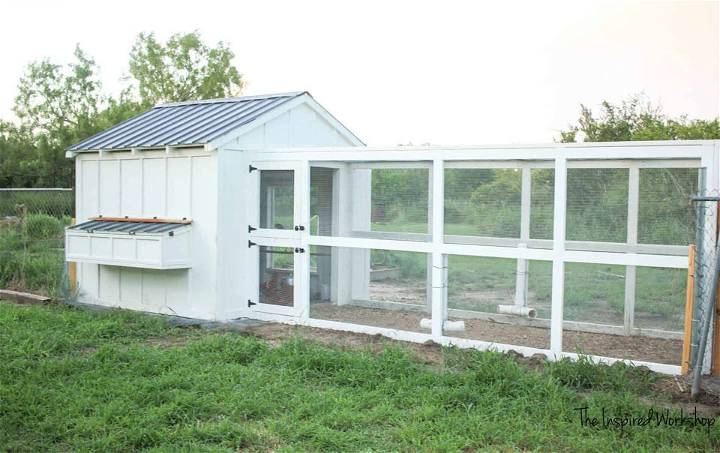
Accommodate more birds comfortably with large chicken run plans designed for bigger flocks. A DIY chicken coop run allows your chickens to enjoy the sunshine and fresh air safely. The Inspired Workshop provides a thorough guide on constructing a simple yet sturdy run. The detailed materials list and cut list ensure you have everything you need before starting. With helpful Sketchup images showing pocket hole placements and step-by-step instructions for building each wall and the roof, you'll find the process manageable.
It's recommended to paint the walls and attach the hardware cloth before assembly for ease. The guide also includes tips for making a double door, enabling flexibility in accessing the run. By following these clear instructions, you can construct a functional outdoor space for your feathered friends.
3. Build Your Own Chicken Run
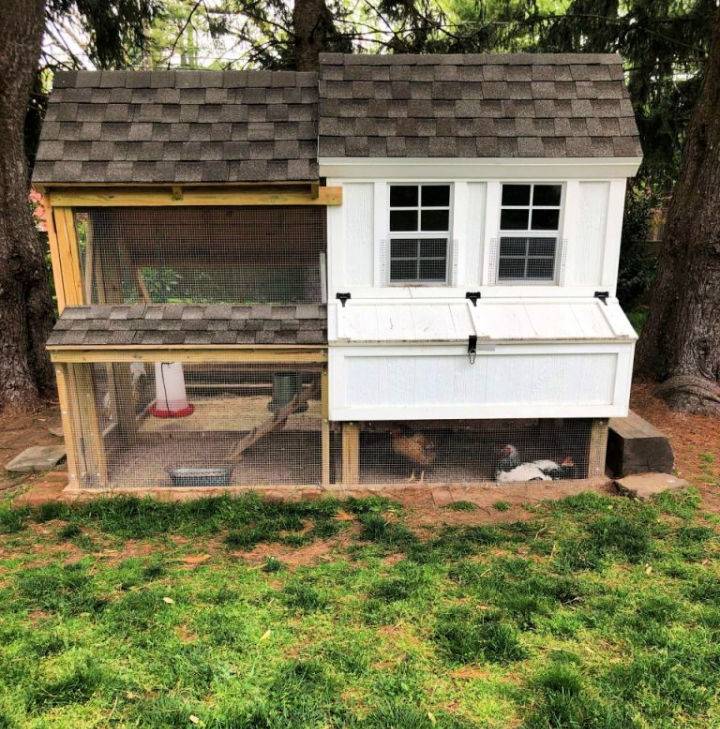
Ready to build a charming and affordable DIY Chicken Coop & Run that's a hit with your feathered friends and your spouse? Lehman Lane offers a comprehensive guide to making a cozy, budget-friendly haven for your backyard chickens. With step-by-step instructions and clever tips like a clean-out poop drawer for easy maintenance, this guide makes it simple to construct a coop that's both functional and a delightful addition to your garden. Learn how to select the perfect location, add protective hardware cloth, and even why sand can be beneficial for your coop and run. Start your DIY chicken coop journey and enjoy the pleasures of raising happy, healthy chickens in a home they'll love.
4. Make Your Own Chicken Run
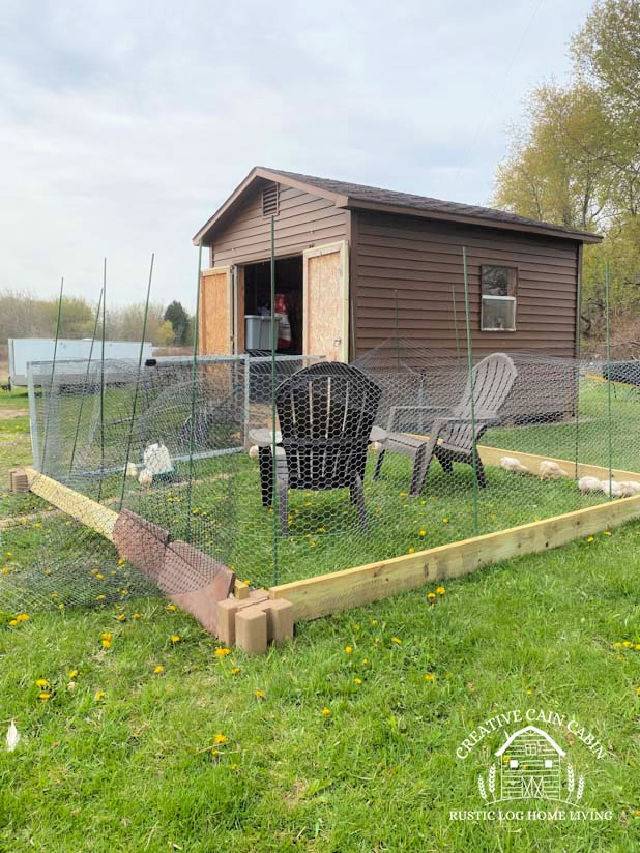
Discover how to construct a no-fuss, tool-free temporary chicken run on CREATIVE CAIN CABIN. Dawn shares her savvy method for making an outdoor space for Cornish Cross meat birds using materials on hand, without spending extra on building supplies. This practical solution not only provides fresh air and exercise for the chickens but also simplifies coop maintenance and reduces bedding costs.
Ideal for small-scale poultry keepers, this guide is a testament to resourcefulness in backyard farming. With easy-to-follow instructions and a focus on repurposing, you'll learn how to set up a functional chicken run that can be dismantled post-butcher.
5. Build a Chicken Coop With Run
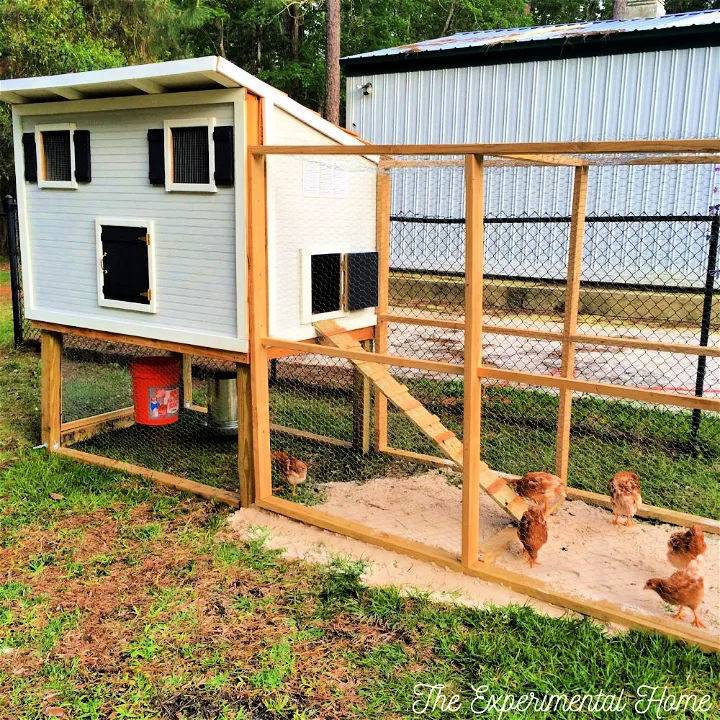
Building a chicken coop with a run can be a rewarding weekend DIY project. The Experimental Home provides a comprehensive guide, including a free PDF plan, to help you build a sturdy and functional space for your backyard poultry. With attention to aesthetics, security, ventilation, and easy cleaning, you'll learn to craft a coop that keeps your chickens safe and comfortable.
By following the step-by-step instructions, you'll ensure your feathered friends have ample room to roam and a cozy nesting area for laying eggs. Get ready to gather your materials and start constructing a home your chickens will love.
6. How to Build a Chicken Coop Run
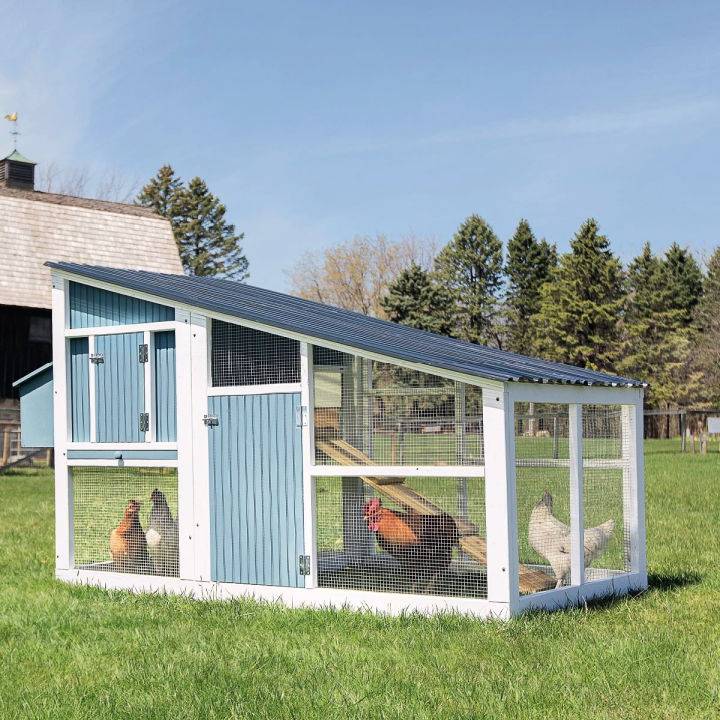
Give your chickens more room to roam with DIY walk-in chicken run plans that are surprisingly simple. Ready to raise chickens in your own backyard and enjoy fresh eggs every morning? Building a chicken coop is easier than you might think, and Family Handyman offers a step-by-step guide to help you build the perfect home for your feathered friends.
With clear instructions and a list of required tools and materials, this DIY project is ideal for anyone with intermediate skills. Not only is the coop and run design practical for both urban and rural settings, but it's also cost-effective, ranging from $400 to $600. Set aside two days, and get ready to enhance your homesteading skills with a chicken coop that's both functional and charming.
7. Chicken Run Building Plans
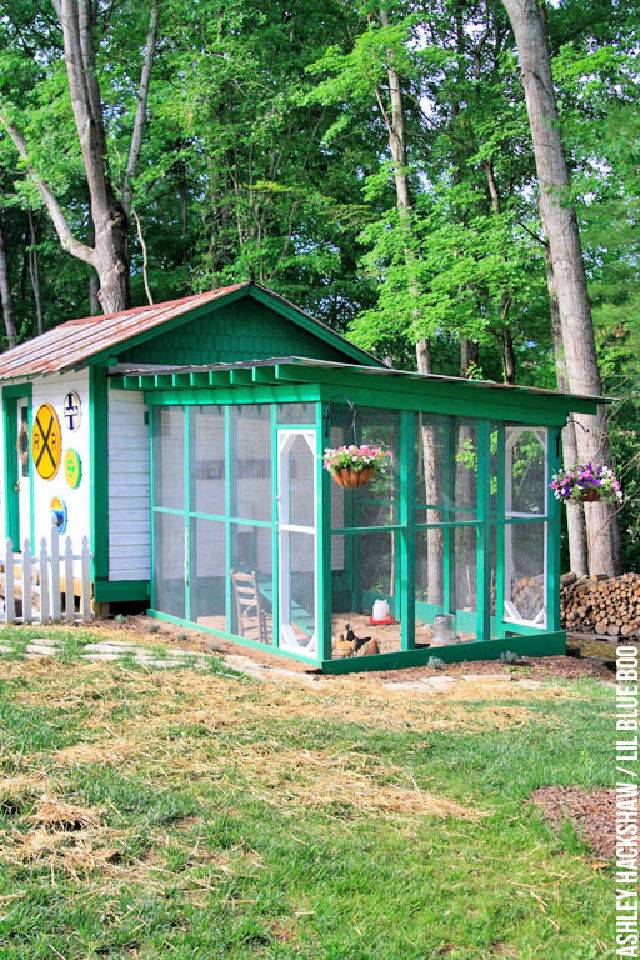
Building a chicken run from scratch can be a rewarding DIY project, and Ashley Hackshaw of Lil Blue Boo offers a comprehensive guide to making a secure and predator-proof enclosure for your feathered friends. With a focus on using sturdy materials like hardware cloth and pressure-treated lumber, the tutorial covers everything from setting posts to adding a roof and crafting doors. Helpful tips, such as using Hillman deck screws for easy assembly and cutting chicken wire with Stanley tin snips, make the process smoother.
The result is a functional and attractive chicken run that ensures the safety and happiness of your chickens, complete with a cozy coop and a ramp for easy access. Explore the step-by-step guide to enhance your backyard with a well-built chicken run that's as durable as it is charming.
8. DIY Backyard Chicken Coop Run
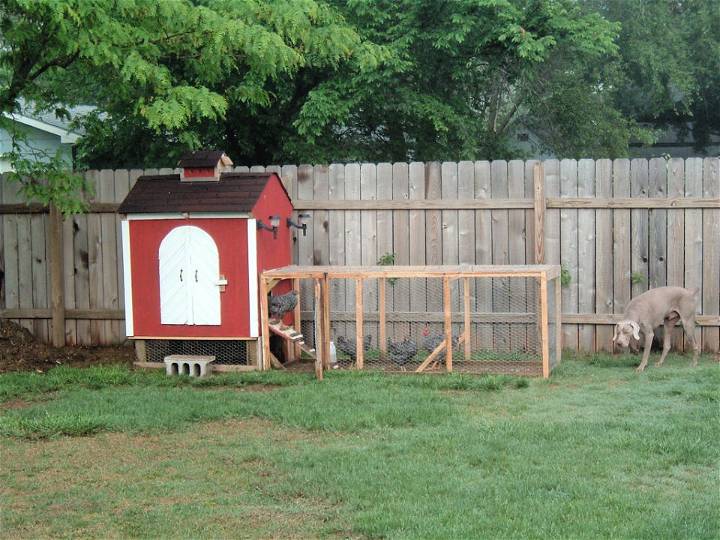
If you're interested in raising chickens and want to construct a backyard chicken coop, Instructables offers a comprehensive guide that will assist you through the process. Designed with aesthetics in mind to appease urban sensibilities, this coop is perfect for housing 3-5 laying hens.
The instructions are clear and detailed, making it easier for you to build a functional and visually appealing coop. With step-by-step directions, you'll learn how to build a sturdy structure that ensures the comfort and safety of your feathered friends. Get ready to enjoy the benefits of fresh eggs and the joy of backyard poultry with this helpful resource.
9. Small Backyard Chicken Pen Ideas
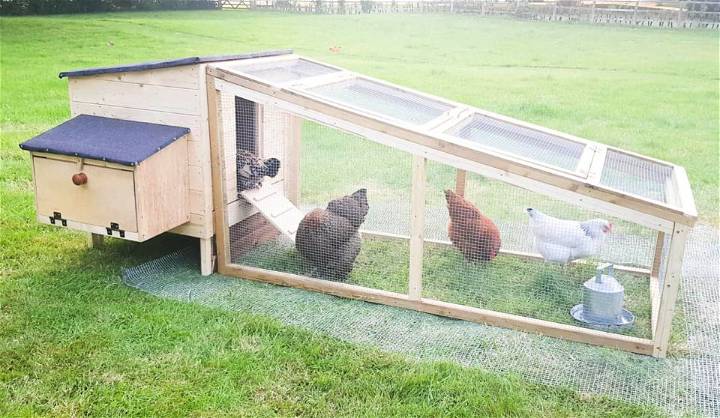
Build a safe space for your poultry with these DIY chicken run plans, tailored for backyard farmers. Building a DIY chicken pen can be a rewarding project, and The Carpenter's Daughter offers free plans to help you construct a small backyard enclosure ideal for a couple of Bantams. Vikkie Lee's design, featured on ITV's Love Your Weekend with Alan Titchmarsh, is easy to assemble and can be completed in about an hour.
The pen is fox-proof, attaches to a chicken coop with a top door for easy access, and is designed for practical cleaning. With step-by-step instructions and a list of necessary tools, you'll have all you need to build a safe and comfortable outdoor space for your chickens.
10. Making a Chicken Run
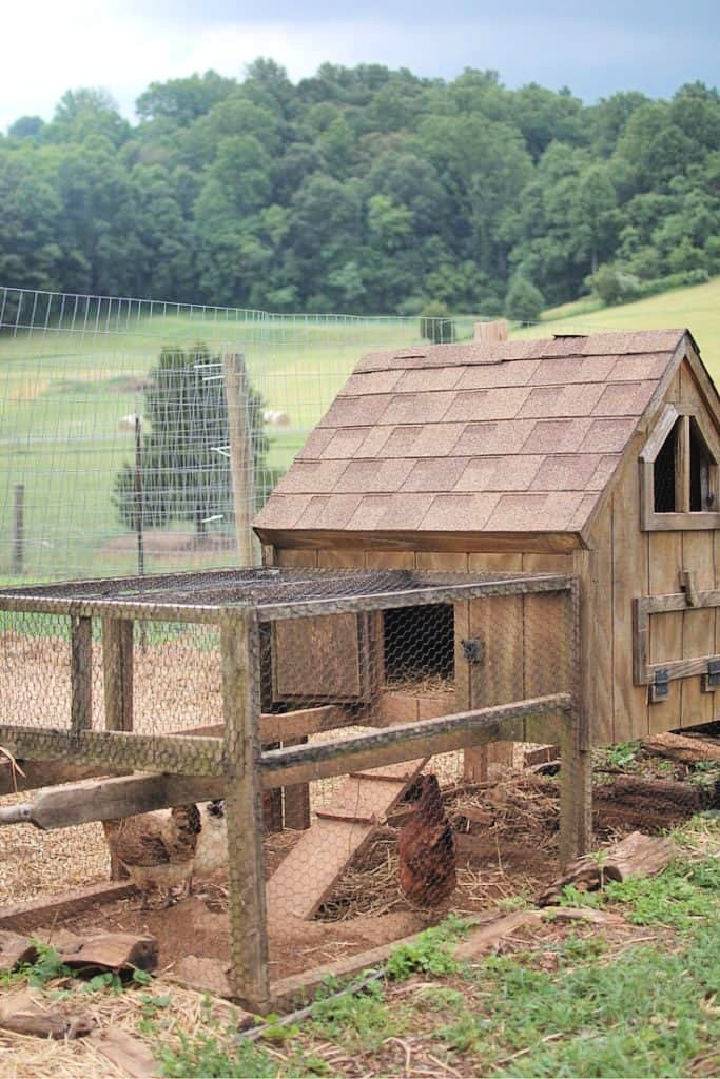
Learn how to build a chicken run with a roof to keep your chickens safe and dry all year round. Building a chicken run can significantly enhance your homestead, providing a safe and enjoyable space for your chickens to roam. On The Prairie Homestead, Jill Winger offers an in-depth guide by Kathleen from Roots & Boots on constructing a durable chicken run.
Learn about sizing, choosing materials, and safeguarding against predators. Discover practical tips for easy cleaning and maintenance to keep your chickens happy and healthy. With step-by-step instructions and a list of necessary tools and materials, this tutorial is perfect for anyone looking to build a secure outdoor area for their feathered friends.
11. How to Make a Chicken Run
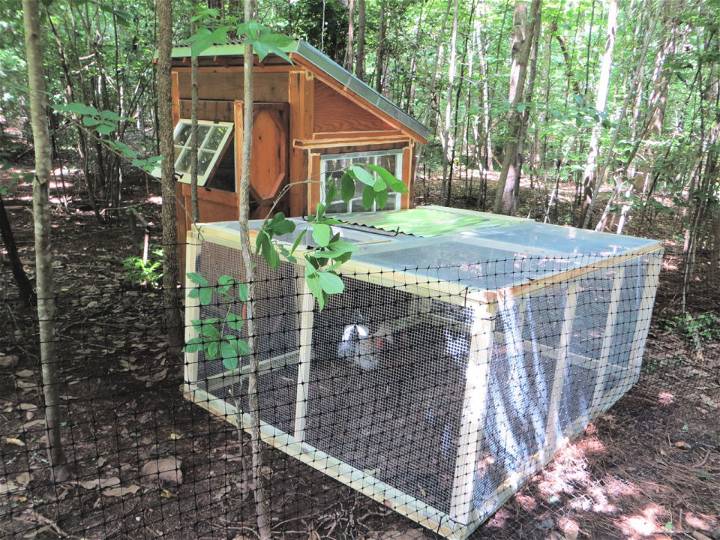
Building a sturdy and secure chicken run need not be a daunting task. The Project Lady offers a DIY guide to constructing an inexpensive chicken run that's both easy to assemble and disassemble for storage. Perfect for safeguarding your chickens during vacations or as a permanent fixture, this design uses common materials and simple tools.
With clear instructions, you'll have a functional run in no time, ensuring your feathered friends are protected without breaking the bank. Ideal for those keen on poultry care, this tutorial simplifies your chicken run project with practical tips and a helpful approach.
12. Simple DIY Chicken Run
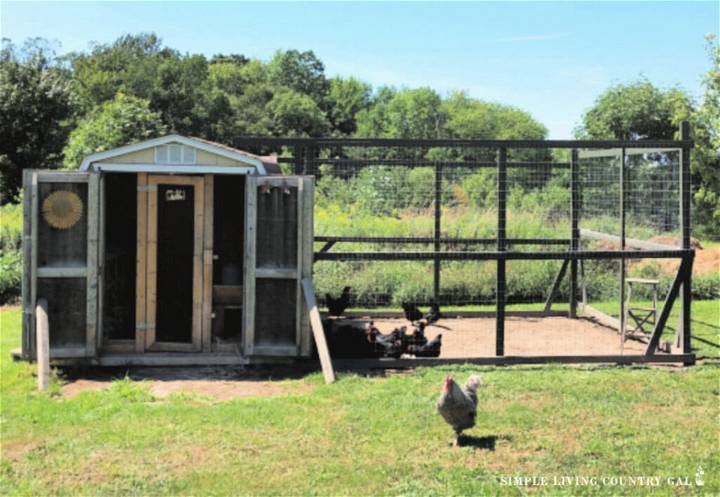
Building a sturdy and safe chicken run for your hens is essential for their protection and happiness. Simple Living Country Gal provides a comprehensive guide on constructing a DIY chicken run tailored to withstand predators and the elements. By considering factors like run height, space per chicken, and the local climate, you can build a secure outdoor haven for your flock.
The instructions emphasize using quality materials and ensuring the framework is robust and well-anchored. Additionally, ideas for enriching the run, such as adding roosts, branches, and dust baths, contribute to a stimulating environment for your chickens. Follow these steps for a chicken run that offers peace of mind and a thriving space for your hens to scratch and peck all day long.
13. Easy DIY Hoop Chicken Run
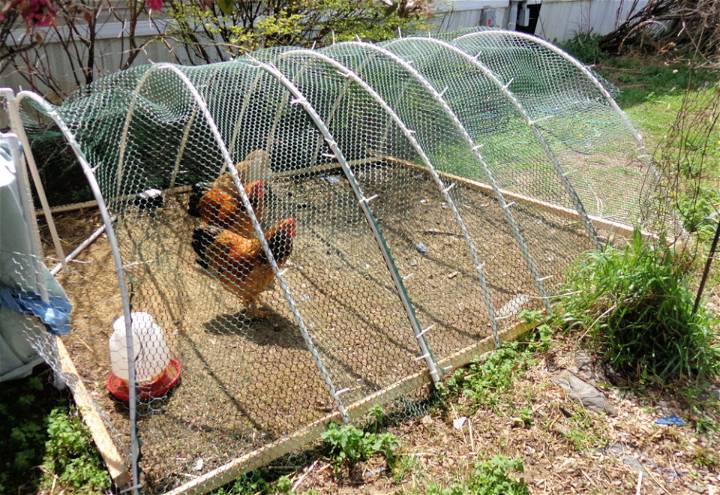
Building a PVC hoop run for your chickens can be a quick and cost-effective project, as shared by a member on BackYard Chickens. For a lightweight and portable structure, 2x2s are recommended, although they may require additional metal braces for stability. PVC pipes build the hoop structure, and plastic chicken wire or hardware cloth can be used for the enclosure, secured with zip ties or wire.
The process involves making a frame, bending and attaching PVC pipes, and affixing the wire. No advanced skills are necessary, and the entire setup can be completed in less than a day, offering an expanded area for your chickens to roam safely.
14. Make a Chicken Run for Beginners
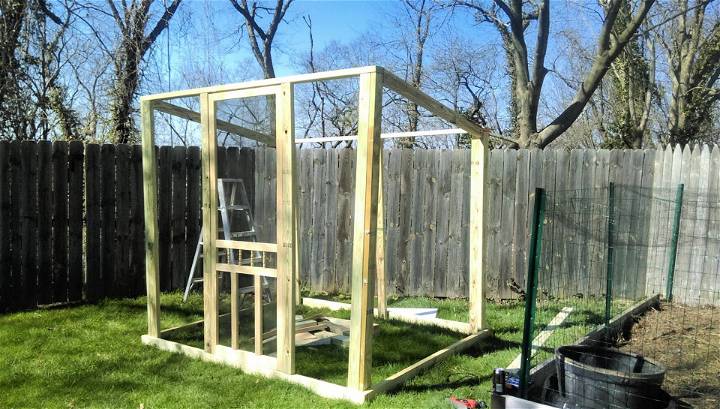
Building a chicken run is a rewarding project that can enhance your backyard and provide a safe space for your chickens. Instructables offers an engaging guide for constructing an 8'x6' fully enclosed run, suitable for housing 4-5 chickens comfortably. The tutorial is designed with novice builders in mind, breaking down each step into manageable tasks. From selecting the right lumber and hardware to the final touches of securing the enclosure and installing a roof, the instructions are clear and easy to follow.
The guide also includes helpful tips on using tools like a circular saw and Kreg pocket hole jig, ensuring your build is both sturdy and functional. Whether you aim to improve your DIY skills or build a haven for your feathered friends, this guide provides the know-how you need to succeed.
15. Make Your Own Chicken Run or Hoop Coop
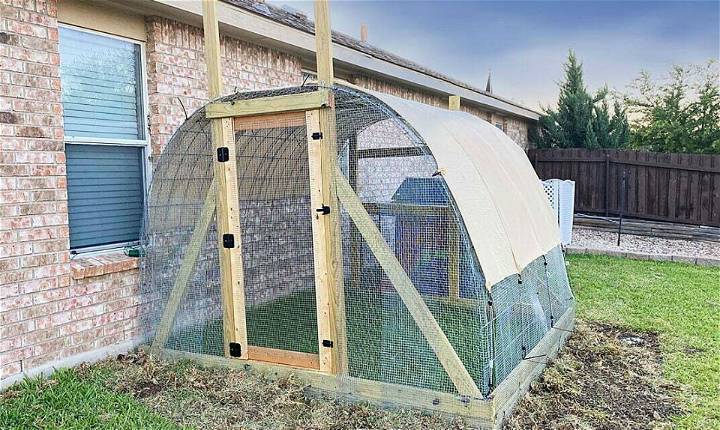
Looking to construct a chicken run for your backyard flock? Start your coop project on a budget with these free chicken run plans that are easy to follow. Oddball Ranch offers an instructive guide that breaks down the process into six straightforward steps, ensuring you can build a safe and spacious environment for your chickens without needing expert carpentry skills.
From selecting the right materials to adding the final touches, this helpful resource empowers you to build a durable chicken run with ease. Learn how to assemble the frame, secure it with hardware cloth, and customize the space for your chickens' needs. Get ready to give your feathered friends the perfect outdoor area to roam and explore.
16. Modern DIY Chicken Run
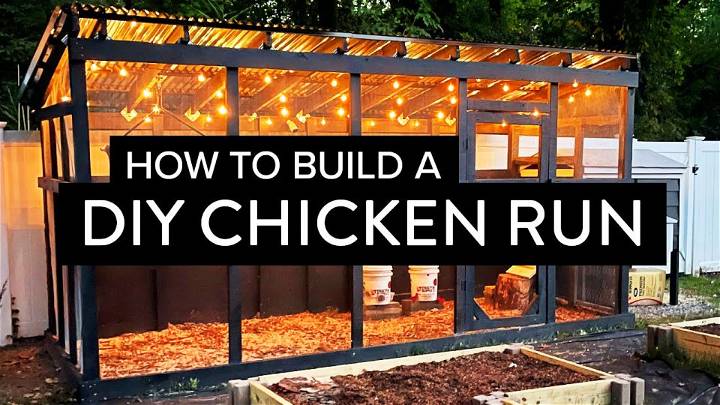
Embark on a delightful journey to craft your own Modern DIY Chicken Run with this comprehensive guide. Revel in the rewarding experience of constructing a walk-in chicken run, measuring an impressive 16 feet long and 6 feet wide, using sustainable practices like repurposing two by fours from previous projects. Learn to install rafters, apply a galvanized metal roof, and paint your coop for a modern touch.
Discover the efficiency of gravel flooring for optimal drainage, topped with hemp shavings for your chickens' comfort. Enhance your coop's functionality with an automatic door and innovative water sensors. This project promises not only a safe, spacious haven for your chickens but also an engaging and fulfilling DIY adventure.
17. Building a Chicken Coop Run
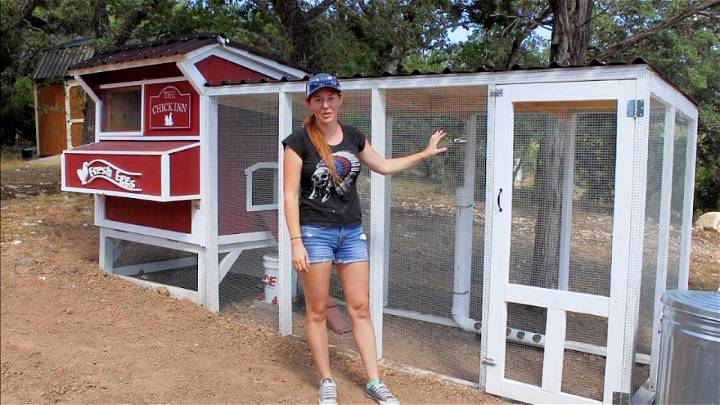
Protect your flock from the elements with comprehensive chicken run plans with roof for all weather conditions. Embark on a rewarding DIY adventure by making a Modern Chicken Run, a perfect blend of functionality and style. This guide will show you how to build a 16x6 feet walk-in chicken run using sustainable materials, including repurposed two by fours. Learn the intricacies of installing rafters, applying a galvanized metal roof, and adding a contemporary touch with paint.
Discover the benefits of gravel flooring for superior drainage, complemented by hemp shavings for your chickens' comfort. Equip your coop with an automatic door and state-of-the-art water sensors, ensuring a safe and spacious haven for your feathered friends. Dive into this fulfilling project and elevate your backyard poultry experience!'
18. How to Do Chicken Coop Run
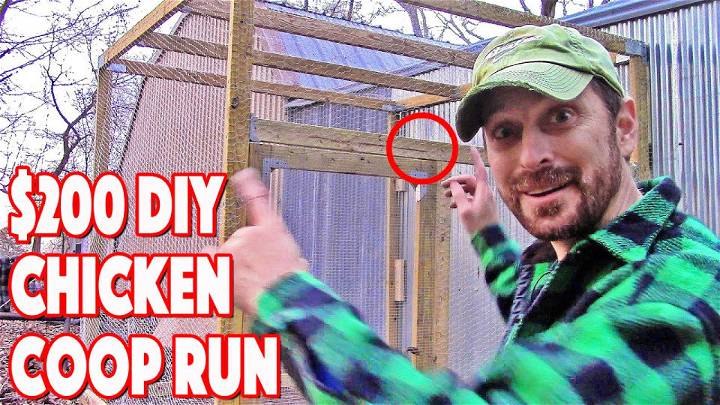
Elevate your backyard farming with a DIY chicken coop run that's both predator-proof and budget-friendly. This engaging guide, straight from a Texas homesteader, walks you through constructing an 8x8x8 foot chicken run using readily available materials like lumber, hardware cloth, chicken wire, and innovative corner brackets. Designed to keep your feathered friends safe, the coop features a sturdy hardware cloth base, preventing digging predators, and a chicken wire top, ensuring protection from aerial threats.
With detailed steps for framing and wire installation, this guide makes building your own chicken haven accessible and rewarding. Perfect for chicken enthusiasts, this project promises a secure, spacious environment for your poultry, blending practicality with the joys of DIY.
19. Easy DIY Chicken Run
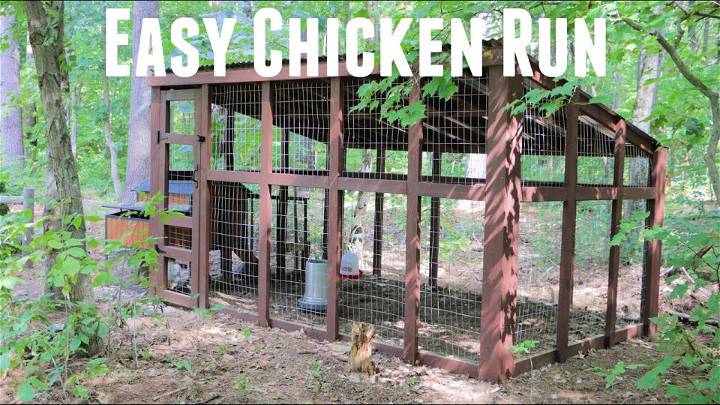
Discover the joy of building a DIY chicken run that's predator-proof and perfect for your feathered friends. In this guide, you'll learn from Tim of Organic Backyard Gardening how to construct a sturdy, spacious run using pressure-treated lumber, hardware mesh, and metal roofing. Starting with leveling the ground and setting the perimeter, Tim details the process of making a sloped roof and a secure mesh foundation to keep predators at bay.
With practical tips on adding a food tray, water station, and even a cozy perch, this chicken run not only provides safety but also enhances your chickens' quality of life. Ideal for backyard chicken enthusiasts, this project promises a fulfilling DIY experience and a happy, secure home for your chickens.
20. DIY Outdoor Chicken Run
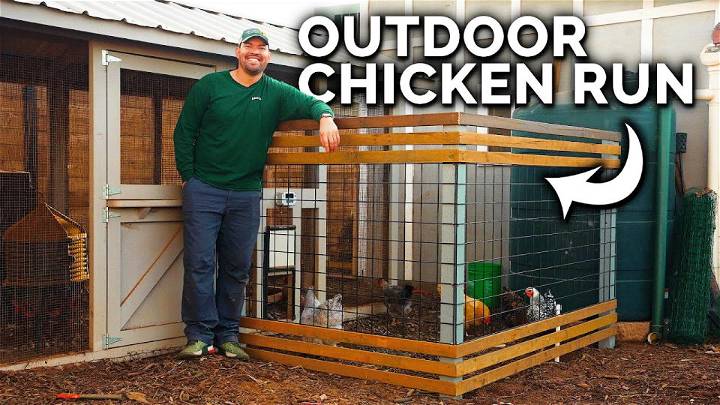
Elevate your backyard poultry care with a custom DIY Outdoor Chicken Run, perfect for happy and healthy hens. This step-by-step guide showcases the transformation of a basic yard space into a secure, spacious haven for chickens. Starting with a simple design, the project includes constructing a four-foot tall fence, integrating an automatic chicken door, and installing sturdy hog panels for enhanced safety.
The tutorial emphasizes ease of egg collection and efficient use of space. Materials like quick-setting concrete, rebar, and cabinet screws ensure durability. A practical, cost-effective solution, this chicken run not only triples the outdoor area for your feathered friends but also adds an aesthetic touch to your garden. Perfect for poultry enthusiasts seeking a rewarding weekend project!
21. Building a Predator-proof Chicken Coop Run
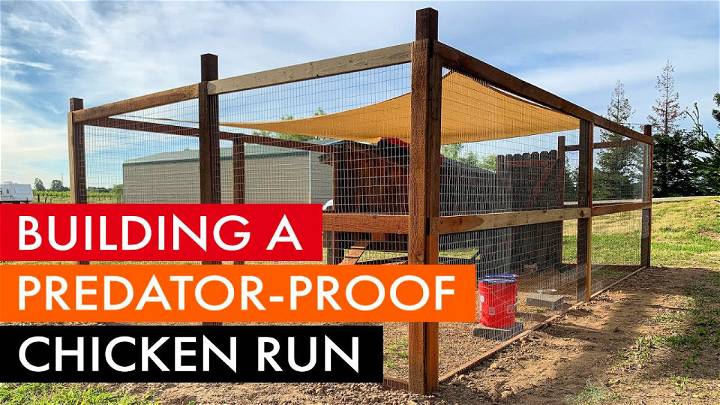
Embark on a family adventure by building a predator-proof chicken coop run, ensuring the safety and comfort of your feathered friends. Discover the joy of constructing a durable run with guidance from a heartwarming YouTube tutorial that takes you through every step of the process. This weekend project involves setting concrete posts, assembling a sturdy frame, and securing it with strong wire far superior to regular chicken wire.
Add an extra layer of defense with a wire skirt and top it off with a shaded canvas cover for both predator protection and relief from the California heat. Perfect for protecting your chicks, this DIY venture turns into a memorable family bonding experience, making a secure and cozy home for your chickens.
22. How to Build a Chicken Coop and Run
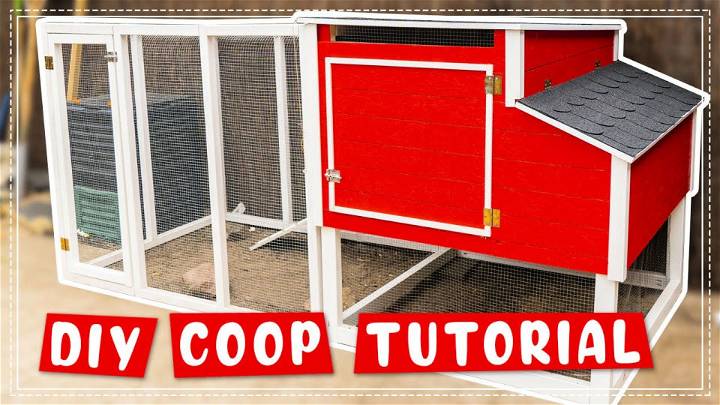
Embark on a rewarding DIY journey by constructing your very own chicken coop and run, tailored to fit your space and meet your chickens' needs. Dive into this comprehensive guide that covers everything from selecting durable plywood to making a sturdy foundation with 44x69mm bars or 2x4s. Learn the art of pre-drilling, using wood glue, and ensuring perfect alignment for a robust structure.
The tutorial includes innovative techniques like using linoleum for easy cleaning, sealing nooks to prevent blood lice, and crafting a movable perch. Paint your coop in a color of your choice, like the vibrant Valentine Red, and add character with decorative grooves. Complete the project by constructing a secure run, ensuring a safe, comfortable haven for your feathered friends.
23. Easy Chicken Coop Run Tutorial
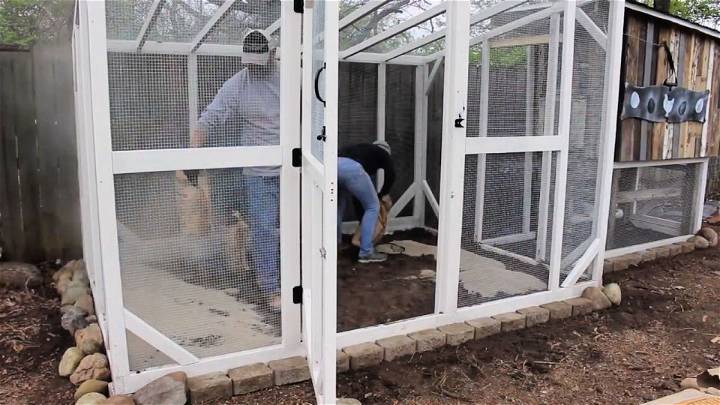
Discover the joy of crafting a sturdy, functional DIY Chicken Coop Run, a perfect addition to your backyard poultry care. This comprehensive guide simplifies the process, starting with a solid base and progressing to a spacious, walk-in structure. Utilizing primarily two by threes and four-inch lumber, along with essential tools like a nail gun, screws, and an angle grinder, this project ensures durability and ease of access.
Protection is key; the coop features hardware cloth for defense against predators, a clever anti-sag gate kit for longevity, and an innovative internal predator apron. Finishing with landscaping stones and sand, this coop run not only provides safety but also a pleasing aesthetic. Ideal for chicken enthusiasts, this DIY venture blends practicality with a touch of countryside charm.
24. Beautiful DIY Chicken Run
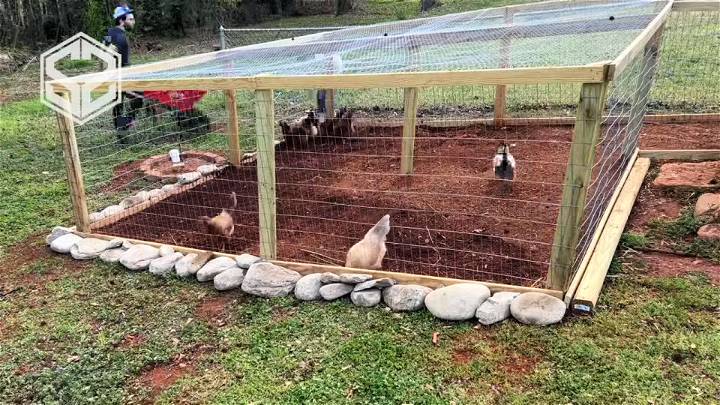
Elevate your backyard poultry care with a DIY Chicken Run, a practical and cost-effective solution for expanding your chickens' living space. This guide demonstrates how to construct a sturdy, predator-proof enclosure using affordable materials like landscape timbers and deck boards, which are a savvy alternative to expensive lumber. Learn to accurately measure and align the run with your property, ensuring a square setup.
The process involves digging post holes, ensuring posts are plumb, and securely wrapping the area with fencing. Additional safety measures include using chicken wire for smaller holes and reinforcing the structure with boards. This run not only provides ample room for your chickens to roam but also protects them from predators with a covered top and rock-lined perimeter. A perfect project for those seeking to enhance their chicken coop while ensuring the safety and happiness of their feathered friends.
25. How to Make a Chicken Coop Run
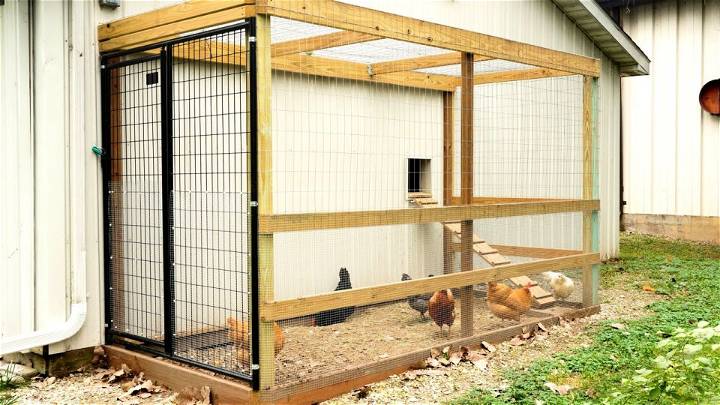
Discover how to construct a durable chicken coop run with the help of a comprehensive YouTube guide by DIYfferent. This video tutorial walks you through the entire process, from material selection to the final build, ensuring your feathered friends have a safe and comfortable outdoor space. The channel provides a detailed list of all the necessary items, including pressure-treated lumber, hardware cloth, welded wire, and outdoor screws.
With a focus on practicality, the coop attaches to a garage, eliminating the need for a separate roof and providing shelter from the elements. Learn how to build a 5' by 12' run with a convenient kennel panel gate, and benefit from the creator's insights on avoiding wood splitting and ensuring stability without concrete. Perfect for DIY enthusiasts, this instructional video is designed to make your chicken coop project a success.
Conclusion:
In conclusion, constructing a DIY chicken run can be a fulfilling project that provides your feathered friends with a safe and enjoyable space. By selecting the right location, gathering necessary materials, and following simple construction steps, you can build a secure environment for your chickens.
From understanding the size requirements to maintaining and protecting the run from predators, this guide offers comprehensive insights into every aspect of how to make a homemade DIY chicken run. Now equipped with 25 homemade DIY chicken run plans, it's time to embark on this rewarding venture, ensuring your chickens have the perfect outdoor sanctuary. Happy building!


